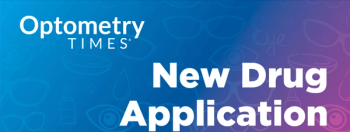
- May digital edition 2023
- Volume 15
- Issue 05
Eye care space shows new developments in 2023 for diabetes care
Insights for eye care providers.
The past year has brought several new developments to the diabetes care arena. These developments include monoclonal antibody therapy for delaying the onset of type 1 diabetes, impressive weight loss with both glucagon-like peptide-1 receptor (GLP-1) and dual GLP/glucose-dependent insulinotropic polypeptide (GIP) drugs, new first-line approval, tighter targets for control of blood pressure and dyslipidemia, and new pharmaceutical agents for diabetic retinopathy (DR) and diabetic macular edema (DME). Let’s take a whirlwind tour of some of these major advances and say a few words about the best treatment option for diabetes available: prevention.
Legislation that capped the cost of insulin therapy for Medicare beneficiaries at $35 per month was passed in August 2022 as part of the Inflation Reduction Act.1 Although great for Medicare beneficiaries who use insulin, this cap does not apply to patients without Medicare coverage and will not likely reduce insulin rationing by the 31 million Americans without any health care coverage. Some diabetologists have cautioned that capping insulin costs will harm some patients by making it more affordable than prescription of cardioprotective and renoprotective drugs such as sodium-glucose transporter type-2 inhibitors (SGLT2i), including empagliflozin.2 Nonetheless, more affordable insulin for all Americans—not just Medicare beneficiaries—would particularly help those who require endogenous insulin to survive, including the 1.8 million Americans with type 1 diabetes.
The first FDA-approved treatment for the delay of symptomatic autoimmune type 1 diabetes was approved at the end of 2022. Teplizumab (Tzield; Provention Bio), a monoclonal antibody against CD3 on the surface of T lymphocytes, is administered intravenously daily for 14 days and is indicated only for patients with positive islet autoantibodies and reduced endogenous insulin production (assessed by C-peptide) without symptomatic hyperglycemia (what is termed stage 2 type 1 diabetes). This drug was shown to delay the onset of profound β-cell loss and severe hyperglycemia by approximately 2 years in clinical trials.3 Although not a cure for type 1 diabetes, teplizumab does buy time and allows patients to acclimate their insulin dose and lifestyle more gradually to the demands of symptomatic stage 3 type 1 diabetes.
Media reports have highlighted the use of GLP-1 agonists by celebrities without diabetes for the purpose of weight loss, resulting in medication shortages.4 In clinical trials and practice, the GLP-1 drug semaglutide (Ozempic and Wegovy from Novo Nordisk at 1 or 2 mg and 2.4 mg, respectively) has demonstrated meaningful weight loss up to 55 lb in patients with or without diabetes over approximately 1 year with the higher dose.5 A newer entry into the market, tirzepatide (Mounjaro), is a dual-acting analogue of both GLP-1 and GIP-1 approved for management of type 2 diabetes that substantially reduces weight (52 lb on average, with up to 70 lb in about one-third of patients over 13 months) and HbA1c level (about 2.6 points).6 Both semaglutide and tirzepatide are administered as weekly subcutaneous injections and have been associated with reduced cardiovascular event risk but also increased chance of worsening diabetic retinopathy, a phenomenon seen with rapid, large reductions in blood glucose level when patients with moderate or severe nonproliferative DR initiate insulin therapy (also known as diabetic reentry retinopathy).7
The FDA recently approved oral semaglutide (Rybelsus; Novo Nordisk) as initial therapy for type 2 diabetes based on glucose-lowering efficacy, sustained weight loss over time, and reduced risk of cardiovascular events.8 This is the first new drug to receive approval as first-line therapy for type 2 diabetes mellitus in 30 years and affords patients who have just received a diagnosis with significantly better weight loss and cardioprotection than metformin in isolation. Mean weight loss over a year is 6% to 12% of baseline body weight9 and mean reduction in HbA1c level is 1% to 1.5%,10 with a 14% to 30% reduction in major adverse cardiovascular events in patients with high-risk disease.11
Standards of care for holistic treatment and empowering patients
The American Diabetes Association’s Standards of Care in Diabetes—202312 contains more than 100 updated recommendations within its 17 sections. These recommendations include new updates highlighting the latest advances in clinical aspects of diabetes management, such as pharmacologic approaches to glycemic treatment, but also suggestions related to holistic diabetes management, including patient-centric language and the influence of social determinants of health such as income, education level, and culture.
The most salient changes include emphasis on supporting higher weight loss targets (up to 15%) based on the efficacy of and access to newer medications such as high-dose semaglutide and tirzepatide (when appropriate), encouraged use of more accessible point-of-care HbA1C testing for more rapid and available screening and diagnosis of diabetes rather than a laboratory-drawn HbA1C test (this recommendation came with the message to health care providers to be more aggressive about preventing type 2 diabetes and diagnosing prediabetes and early type 2 diabetes), new lipid management recommendations for lower low-density lipoprotein cholesterol level in individuals aged 40 to 75 years with high-risk disease (<70 mg/dL in general and <55 mg/dL for those with preexisting atherosclerotic cardiovascular disease), stricter blood pressure level targets (<130/80 for most patients), use of continuous glucose monitoring systems for all patients using exogenous insulin, new recommendations to screen for sleep disorder breathing and insomnia in all patients with diabetes and prediabetes, screening for food insecurity among those with and at risk for diabetes by deploying a 2-question survey in clinical settings, and initiation of drugs offering cardiorenal protection in patients with high-risk disease with a diagnosis of type 2 diabetes (SGLT2i and GLP-1 analogues). The updated document places emphasis on using all health care personnel to educate patients, achieve diabetes management goals, and prevent complications. Although eye care physicians are not specifically referenced in this recommendation, we should be.
New technologies in eye care
In the eye care space, several new artificial intelligence (AI) platforms have emerged over the past 2 years, and several others are waiting in the wings. Some of these systems not only detect DR but also grade severity consistently with the Early Treatment Diabetic Retinopathy Study Diabetic Retinopathy Severity Scale while allowing eye care physicians to compare their own grading with that generated by AI (EyeArt; Eyenuk Inc). Hopefully, algorithms using wide-field images will become commercially available soon and will facilitate more comprehensive analysis and accurate staging of DR severity. Other technologies showing promise for deciding which patients are most likely to benefit from earlier intervention (with anti-VEGF or laser) include full-field electroretinography (ffERG). One offering uses ffERG amplitude and implicit time (interval before generation of the signal response) combined with pupillary response to the stimulus and generates a single numeric value, called the DR score, to predict which patients are most likely to require therapeutic intervention over the following 1 to 3 years (RETeval; LKC Technologies) (Figure 1).13
Technologies such as these may help optometrists decide which patients should be referred to the retinal specialist and when. Machine learning and AI may also be capable of identifying novel retinal vascular features that presage worsening disease. Metrics such as a DR score could arm eye care providers with an easily understandable risk number to help guide surveillance/referral decisions and assess the efficacy of both invasive (laser, injections) and noninvasive therapies (eg, improved metabolic control of diabetes, micronutrient intervention, and topical agents such as integrin inhibitors or brimonidine/somatostatin eye drops, which are all analogous to monitoring the effect of various glaucoma therapies on IOP, visual field, and optical coherence tomography parameters).
Emerging therapies
New therapies for DR have also emerged over the past year, including faricimab (Vabysmo; Genentech), the first dual anti-VEGF and anti-ANG2 therapy demonstrating noninferiority to anti-VEGF therapy alone and extended treatment intervals of 12 weeks for patients with center-involved DME (CI-DME) in more than half of patients.14 Similarly, high molar-dose anti-VEGF aflibercept (8 mg vs 2 mg) has been shown to significantly extend the treatment interval for patients with CI-DME (>90% of patients maintained treatment intervals of ≥12 weeks).15 Therapies such as these that extend the time between successive intravitreal injections will reduce the burden on both patients and their providers and provide a great opportunity for optometrists to provide intertreatment surveillance to maximize and maintain gains in vision.
Prevention is key
Of course, the best strategy for preventing diabetes complications, including severe vision loss, is to prevent diabetes in the first place. The reality is that we have created a society that produces dysglycemia and diabetes through a variety of mechanisms, including a surfeit of calories, poor nutrient density, sedentary lifestyle, particulate air and water/soil pollution, food insecurity, psychosocial stress, and both genetic and epigenetic modifications.16
A panel of diabetes experts recently reported to the US Congress that diabetes is a multifactorial disease and that no “magic bullet” for its prevention exists. Their recommendations in 2021 included creating an office of national diabetes policy, increasing funding of the US Department of Agriculture’s nutrition assistance programs, requiring paid maternity leave to increase rates of breastfeeding known to diminish diabetes risk, updating labeling requirements on packaged foodstuffs, increasing authority for the Federal Trade Commission to regulate food and beverage marketing to children, enhancing community walkability/green spaces to promote physical activity, enhancing community-level public health education, and increasing payment for diabetes education and prevention services.17 Some of these recommendations are expensive and politically charged, but inaction will inexorably lead to increased costs to diabetes care and productivity ($327 billion in 2017)18 and a monumental, persistent drag on the US health care system and economy writ large for decades to come.
References
1. Hirsch IB. Insulin pricing in the USA: the saga continues. Lancet Diabetes Endocrinol. 2022;10(10):695. doi:10.1016/S2213-8587(22)00251-0
2. Rose M. Lowering the cost of insulin could be deadly. The Atlantic. September 5, 2022. Accessed April 24, 2023. https://www.theatlantic.com/health/archive/2022/09/diabetes-medication-insulin-cost/671333/
3. LeFevre JD, Cyriac SL, Tokmic A, Pitlick JM. Anti-CD3 monoclonal antibodies for the prevention and treatment of type 1 diabetes: a literature review. Am J Health Syst Pharm. 2022;79(23):2099-2117. Doi:10.1093/ajhp/zxac244
4. Goodman B. As the market for new weight loss drugs soars, people with diabetes pay the price. CNN. December 28, 2022. Accessed April 24, 2023. https://www.cnn.com/2022/12/28/health/weight-loss-diabetes-drug-shortages/index.html
5. Singh G, Krauthamer M, Bjalme-Evans M. Wegovy (semaglutide): a new weight loss drug for chronic weight management. J Investig Med. 2022;70(1):5-13. doi:10.1136/jim-2021-001952
6. Jastreboff AM, Aronne LJ, Ahmad NN, et al; SURMOUNT-1 Investigators. Tirzepatide once weekly for the treatment of obesity. N Engl J Med. 2022;387(3):205-216. doi:10.1056/NEJMoa2206038
7. Bain SC, Klufas MA, Ho A, Matthews DR. Worsening of diabetic retinopathy with rapid improvement in systemic glucose control: a review. Diabetes Obes Metab. 2019;21(3):454-466. doi:10.1111/dom.13538
8. FDA approves Novo Nordisk’s Rybelsus as first line treatment for type 2 diabetes. FDAnews. January 17, 2023. Accessed April 18, 2023. https://www.fdanews.com/articles/210826-fda-approves-novo-nordisks-rybelsus-as-first-line-treatment-for-type-2-diabetes
9. Ghusn W, De la Rosa A, Sacoto D, et al. Weight loss outcomes associated with semaglutide treatment for patients with overweight or obesity. JAMA Netw Open. 2022;5(9):e2231982. doi:10.1001/jamanetworkopen.2022.31982
10. Pratley RE, Crowley MJ, Gislum M, et al. Oral semaglutide reduces HbA1c and body weight in patients with type 2 diabetes regardless of background glucose-lowering medication: PIONEER subgroup analyses. Diabetes Ther. 2021;12(4):1099-1116. doi:10.1007/s13300-020-00994-9
11. Husain M, Consoli A, De Remigis A, Pettersson Meyer AS, Rasmussen S, Bain S. Semaglutide reduces cardiovascular events regardless of metformin use: a post hoc subgroup analysis of SUSTAIN 6 and PIONEER 6. Cardiovasc Diabetol. 2022;21(1):64. doi:10.1186/s12933-022-01489-6
12. ElSayed NA, Aleppo G, Aroda VR, et al. Improving care and promoting health in populations: standards of care in diabetes-2023. Diabetes Care. 2023;46(suppl 1):S10-S18. doi:10.2337/dc23-S001
13. Brigell MG, Chiang B, Maa AY, Davis CQ. Enhancing risk assessment in patients with diabetic retinopathy by combining measures of retinal function and structure. Transl Vis Sci Technol. 2020;9(9):40. doi:10.1167/tvst.9.9.40
14. Wykoff CC, Abreu F, Adamis AP, et al; YOSEMITE and RHINE Investigators. Efficacy, durability, and safety of intravitreal faricimab with extended dosing up to every 16 weeks in patients with diabetic macular oedema (YOSEMITE and RHINE): two randomised, double-masked, phase 3 trials. Lancet. 2022;399(10326):741-755. doi:10.1016/S0140-6736(22)00018-6
15. Hutton D. Aflibercept shown to work at higher dose, longer intervals. Ophthalmology Times. September 8, 2022. Accessed April 19, 2023. https://www.ophthalmologytimes.com/view/aflibercept-shown-to-work-at-higher-dose-longer-intervals
16. Chous AP. Five diabetes truisms that are (at least partially) false. Optometry Times. March 25, 2022. Accessed April 19, 2023. https://www.optometrytimes.com/view/5-diabetes-truisms-that-are-at-least-partially-false
17. National Clinical Care Commission. Report to Congress on Leveraging Federal Programs to Prevent and Control Diabetes and Its Complications. Accessed April 24, 2023. https://health.gov/sites/default/files/2022-01/NCCC%20Report%20to%20Congress.pdf
18. O’Connell JM, Manson SM. Understanding the economic costs of diabetes and prediabetes and what we may learn about reducing the health and economic burden of these conditions. Diabetes Care. 2019;42(9):1609-1611. doi:10.2337/dci19-0017
Articles in this issue
over 2 years ago
Comanagement of refractive surgeries: What are you waiting for?over 2 years ago
Digital health care evolves in the aftermath of the pandemicover 2 years ago
Measure twice, cut once: Repeat testing provides clarityover 2 years ago
Nerve growth factor: From discovery to development for human useNewsletter
Want more insights like this? Subscribe to Optometry Times and get clinical pearls and practice tips delivered straight to your inbox.



















































.png)


